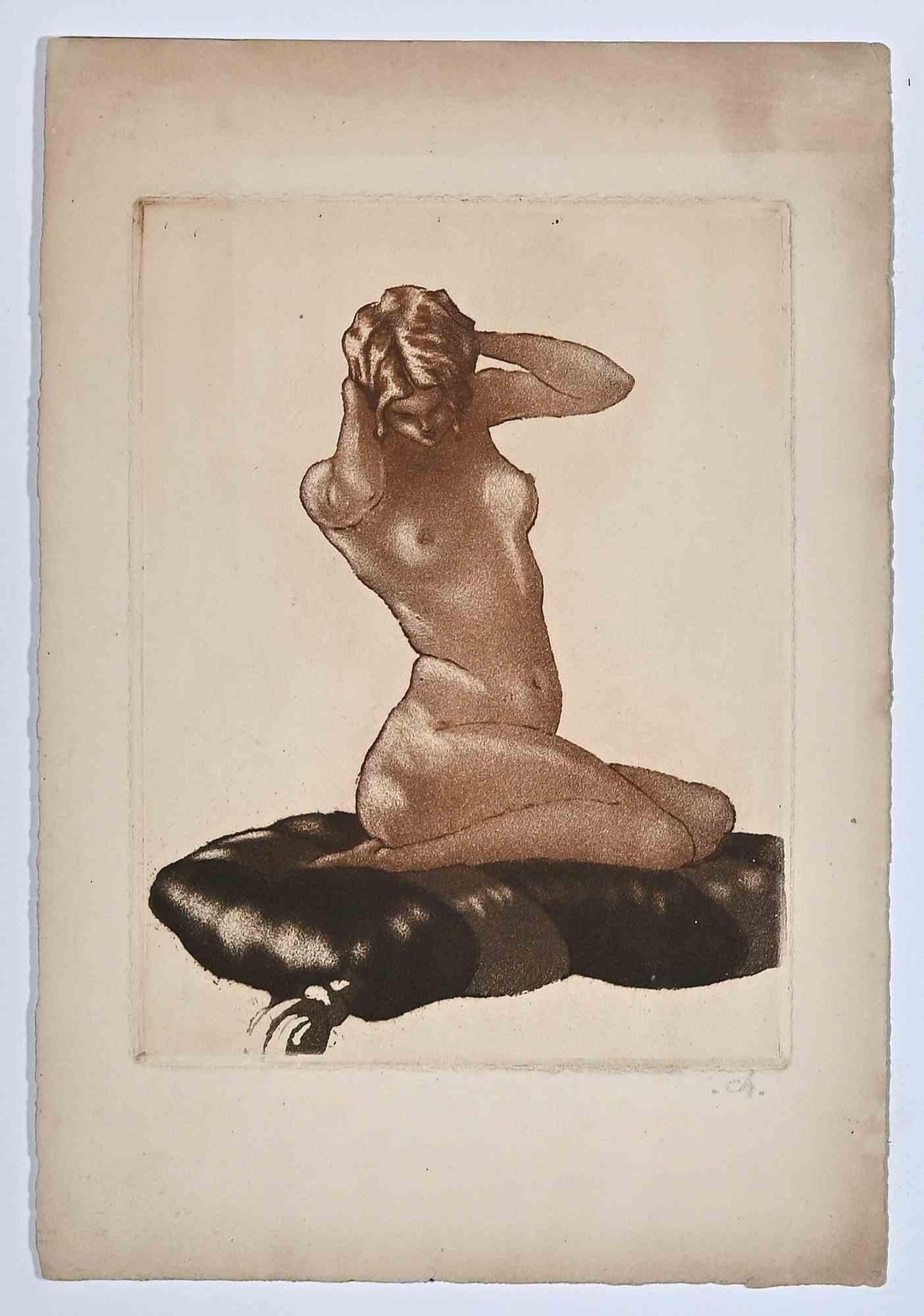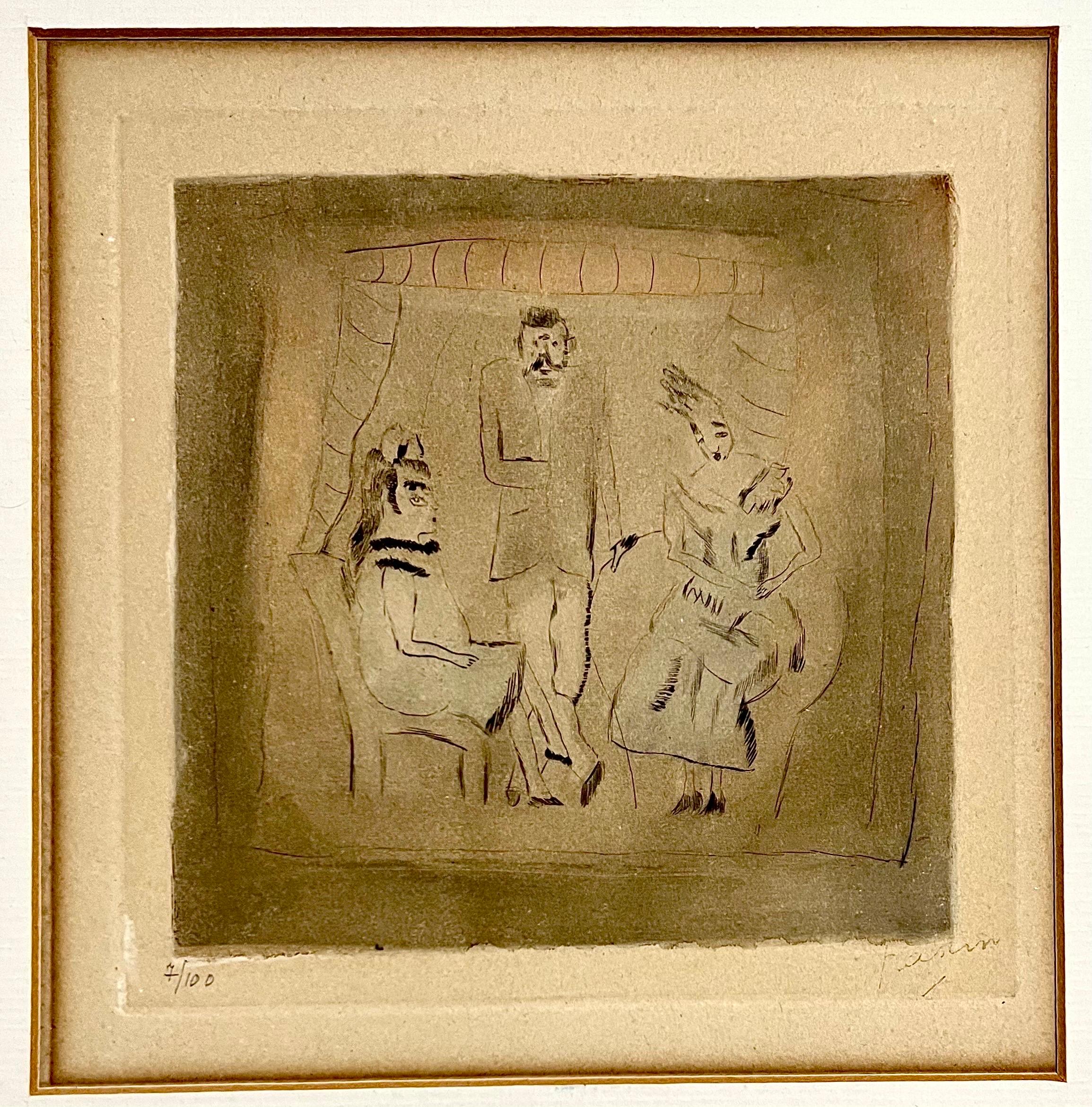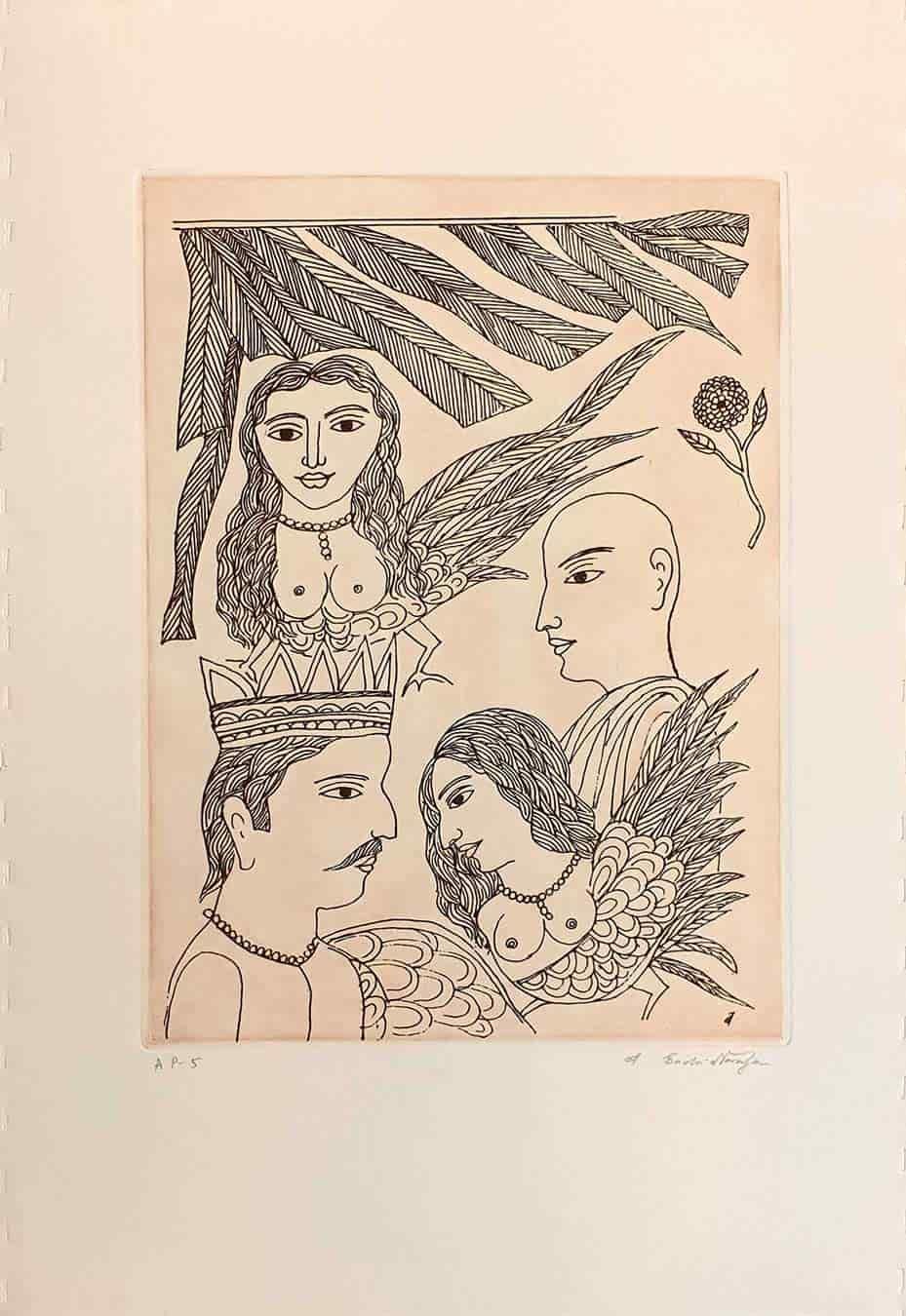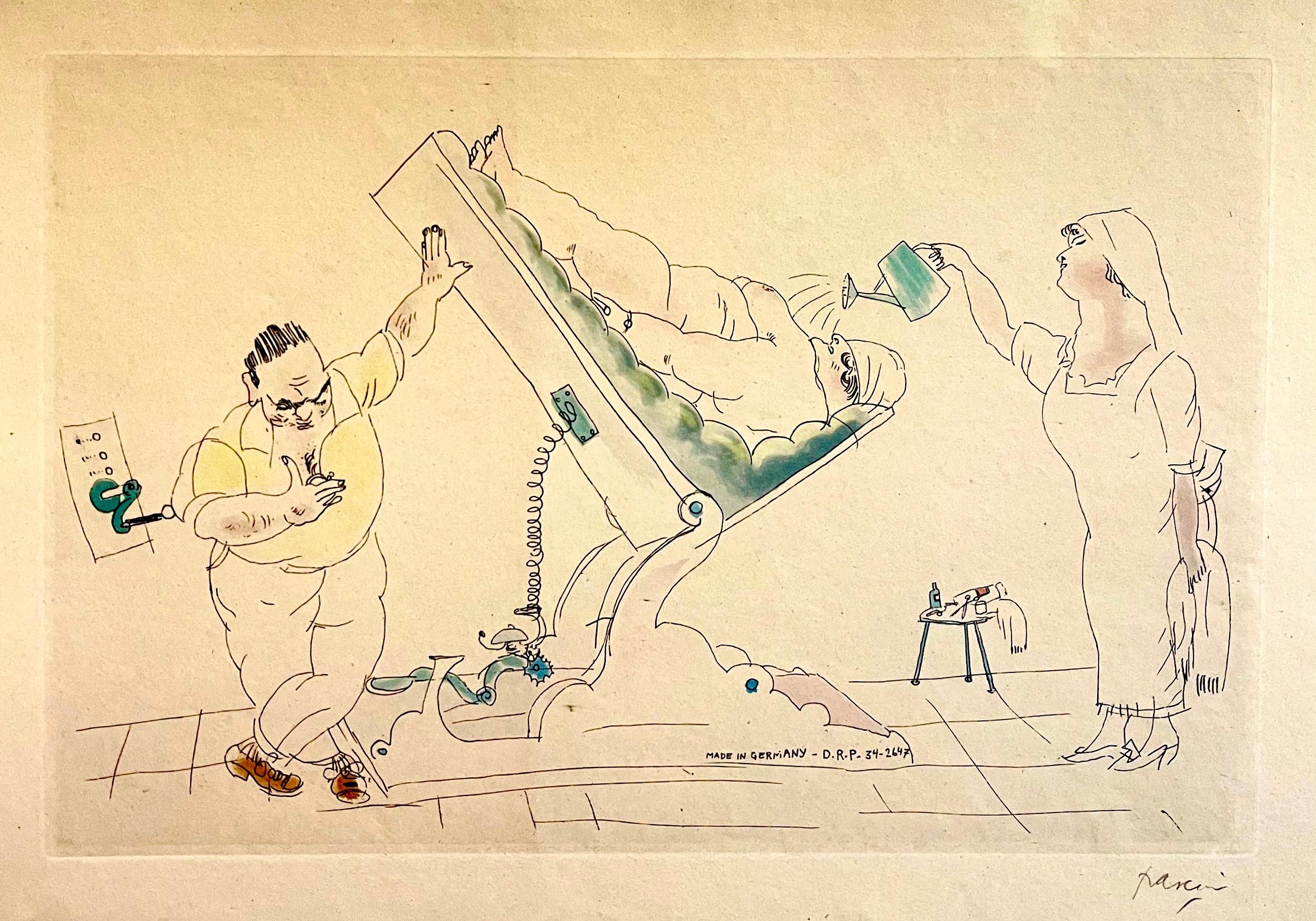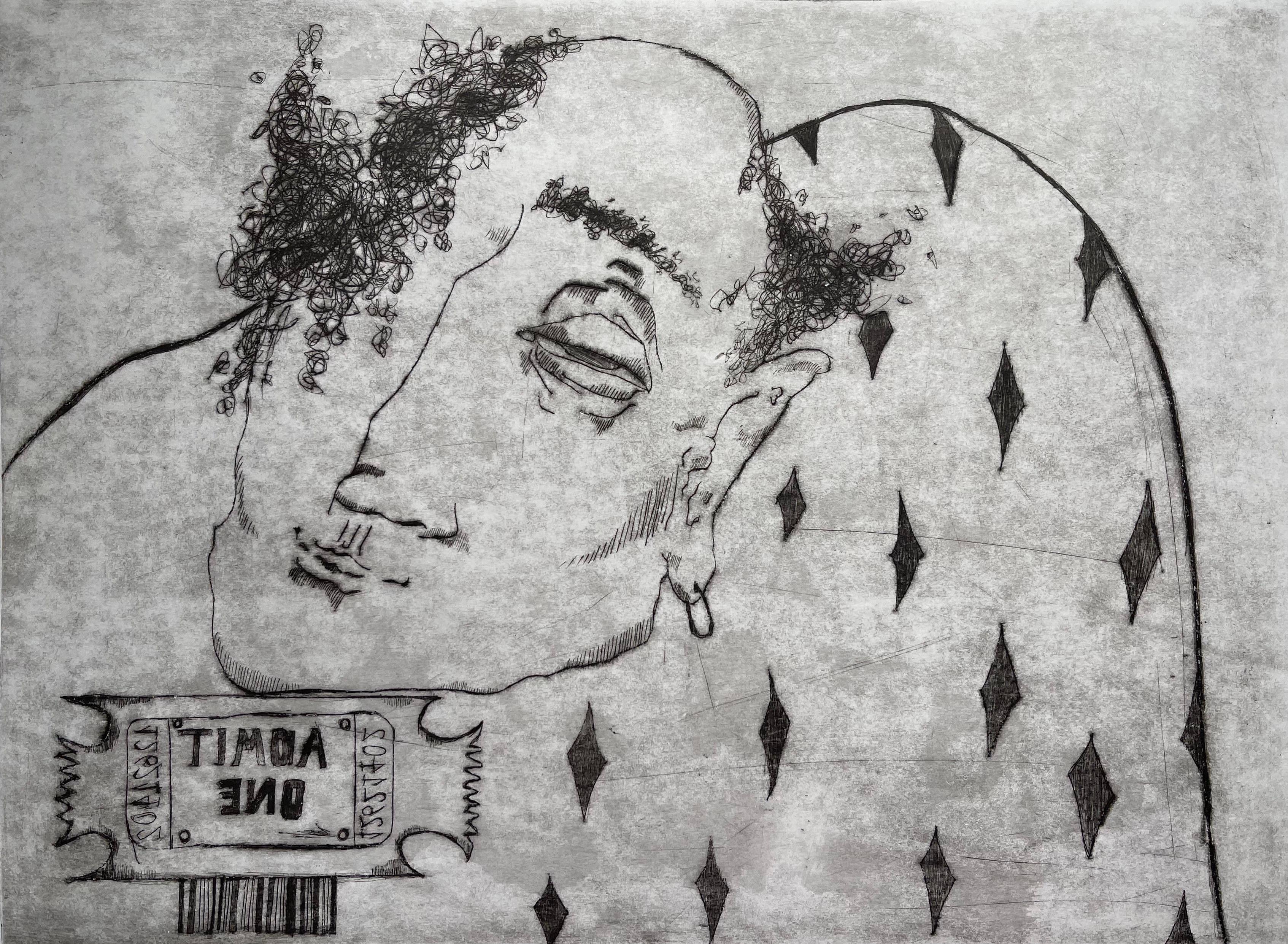
Untitled - Titleprint for the set of printdrawings.
View Similar Items
1 of 1
Cornelis Ploos van AmstelUntitled - Titleprint for the set of printdrawings.1765
1765
About the Item
- Creator:Cornelis Ploos van Amstel (1726 - 1798, Dutch)
- Creation Year:1765
- Dimensions:Height: 9.85 in (25 cm)Width: 9.34 in (23.7 cm)
- Medium:
- Period:1760-1769
- Condition:No margins, as published. On the original supportsheet. General age-related toning and occasional minor defects from handling.
- Gallery Location:Zeeland, NL
- Reference Number:Seller: 49884 LA-B3-011stDibs: LU59232583433
You May Also Like
- French ModernLocated in Houston, TXFrench abstract aquatint etching of robed figure and aircraft, 1978. Signed lower right. Original artwork on paper displayed on a white mat with a gold border. Archival plastic slee...Category
1970s Figurative Drawings and Watercolors
MaterialsAquatint
- Dramatic Profiles in MultiplesBy Colette PettierLocated in Houston, TXDramatic mid-century etching of profiles layered over each other by French artist Collette Pettier, 1965. Signed lower right. Original artwork on paper displayed on a white mat with...Category
1960s Figurative Drawings and Watercolors
MaterialsEtching
- Epsom- The Race OverBy James PollardLocated in Bristol, CTImage Sz: 13 3/4"H x 19 1/4"W Frame Sz: 21"H x 26"W Extremely rare colour sporting aquatint engraving by James Pollard (1792-1867) depicting "Epsom The Race Over' published by Arth...Category
19th Century Figurative Drawings and Watercolors
MaterialsAquatint
- Nonna Rosina - Original Etching by Leo Guida - 1975By Leo GuidaLocated in Roma, ITNonna Rosina is an original etching print realized by Leo Guida in 1975. Hand-signed on the lower right in pencil and dated. Artist's proof. Titled on the lower center. with the po...Category
1970s Contemporary Figurative Drawings and Watercolors
MaterialsEtching
- Elle Le Boude - Etching by Philibert-Louis Debucourt - 1797By Philibert-Louis DebucourtLocated in Roma, ITElle Le Boude is an Original Etching Hand Watercolored series "Costumes Parisiens" published in 1797 by the Journald des Dames et des Modes". Costume...Category
19th Century Modern Figurative Drawings and Watercolors
MaterialsEtching, Watercolor
- Aquatint Etching with Hand Watercolor Painting Jules Pascin SignedBy Jules PascinLocated in Surfside, FLGenre: German Expressionist Subject: Three Noble figures, Noblesse Medium: etching, watercolor paint (I have seen this described as an aquatint and have seen this without color, so i am assuming it is watercolor paint applied to it) Surface: Paper Circa 1920's This is hand signed lower right. the edition is 7/100 Mat measures 15 X 11. window opening about 7 x 7 Julius Mordecai Pincas (March 31, 1885 – June 5, 1930), known as Pascin Jules Pascin, or the "Prince of Montparnasse", was a Bulgarian artist known for his paintings and drawings. He later became an American citizen. His most frequent subject was women, depicted in casual poses, usually nude or partly dressed. Pascin was educated in Vienna and Munich. He traveled for a time in the United States, spending most of his time in the South. He is best known as a Parisian painter, who associated with the artistic circles of Montparnasse, and was one of the emigres of the School of Paris. Having struggled with depression and alcoholism, he committed suicide at the age of 45. Julius Mordecai Pincas was born in Vidin, Bulgaria, the eighth of eleven children, to the Sephardic Jewish family of a grain merchant named Marcus Pincas. Originally from Ruse, the Pincas family was one of the wealthiest in Vidin; they bought and exported corn, rice, maize and sunflower. His mother, Sofie (Sophie) Pincas, belonged to a Sephardic family, Russo, which had moved from Trieste to Zemun, where she and her husband lived before moving to Vidin and where their older children were born. The family spoke Ladino Judaeo-Spanish at home. In 1892, he moved with his parents to Bucharest, where his father opened a grain company, "Marcus Pincas & Co". Pascin worked briefly for his father’s firm at the age of fifteen, but also frequented a local brothel where he made his earliest drawings. His first artistic training was in Vienna in 1902 at age seventeen. In 1903 he relocated to Munich, where he studied at Moritz Heymann's academy. He studied briefly in Berlin where he befriended the Dada artist George Grosz. In 1905 he began contributing drawings to Simplicissimus, a satirical magazine published in Munich. Some portraits recall Otto Dix and Balthus. Because his father objected to the family name being associated with these drawings, the 20-year-old artist adopted the pseudonym Pascin (an anagram of Pincas). He continued to contribute drawings to a Munich daily until 1929. In December 1905, Pascin moved to Paris becoming part of the great migration of Jewish and Eastern European artists to that city (Marc Chagall. Chaim Soutine and Modigliani amongst others) at the start of the 20th century. In 1907 he met Hermine Lionette Cartan David, also a painter, and they became lovers. In that same year he had his first solo exhibition at Paul Cassirer Gallery in Berlin. Despite his social life, Pascin created thousands of watercolors and sketches, plus drawings and caricatures that he sold to various newspapers and magazines. He exhibited his works in commercial galleries and in the Salon d’Automne, the Salon des Indépendants, and the exhibitions of the Berlin Secession and at the Sonderbund-Aussstellung in Cologne. Between 1905 and 1914 he exhibited drawings, watercolors, and prints, but rarely paintings. It was not until about 1907–1909 that he produced his first paintings, which were portraits and nudes in a style influenced by Fauvism and Cézanne. He wanted to become a serious painter, but in time he became deeply depressed over his inability to achieve critical success with his efforts. Dissatisfied with his slow progress in the new medium, he studied the art of drawing at the Académie Colarossi, and painted copies after the masters in the Louvre. He exhibited in the United States for the first time in 1913, when twelve of his works were shown at the Armory Show in New York. Pascin relocated to London at the outbreak of World War I to avoid service in the Bulgarian army and left for the United States on October 3, 1914. A few weeks later on October 31, Hermine David sailed for the United States to join him. Pascin and David lived in the United States from 1914 to 1920, sitting out World War I. They visited New York City, where David had an exhibit. Pascin frequented nightclubs, and met artists such as Yasuo Kuniyoshi and Guy Pene du Bois, but most of his time in America was spent traveling throughout the South. He also visited Cuba. He made many drawings of street life in Charleston, New Orleans, and other places he visited. Some of his works of 1915 and 1916 are in a Cubist style, which he soon abandoned. In 1918 Pascin married Hermine David at City Hall in New York City. Their witnesses were Max Weber and Maurice Sterne, friends and painters who both lived in New York. In September 1920, Pascin became a naturalized United States citizen, with support from Alfred Stieglitz and Maurice Sterne, but returned to Paris soon afterward. There he began a relationship with Lucy Vidil Krohg, who had been his lover ten years earlier but had married the Norwegian painter Per Krohg...Category
Early 20th Century Expressionist Figurative Drawings and Watercolors
MaterialsPaper, Watercolor, Etching


